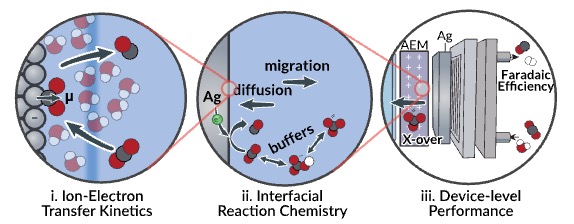2024 AIChE Annual Meeting
(392g) Resolving the Role of the Interfacial Electrolyte Environment in Electrochemical CO2 Reduction
In this talk, I will explore how multi-scale continuum theory can be used to rationalize and guide the design of tailored electrolyte environments for CO2 reduction. I will discuss our group’s recent efforts to bridge mesoscale mass transport, nanoscale double layer structure, and quantum-mechanical electron transfer to reveal the origin through which the local electrolyte environment dictates CO2 reduction performance both in flow-cells and membrane-electrode assemblies. Our model quantitatively predicts enhancements in CO2 reduction performance with differing electrolyte cations by coupling modified Poisson-Nernst-Planck approaches with coupled-ion-electron transfer theory. Furthermore, I will discuss how a complete understanding of electron tunneling and CO2transport across multiple scales is required to accurately determine the rate of CO2 reduction. While applied here for CO2 reduction, the developed theory presents a significant advance in understanding the role of the double layer in electrocatalysis and is relevant for the myriad of electrochemical reactions where control of the interfacial electrolyte is useful.
